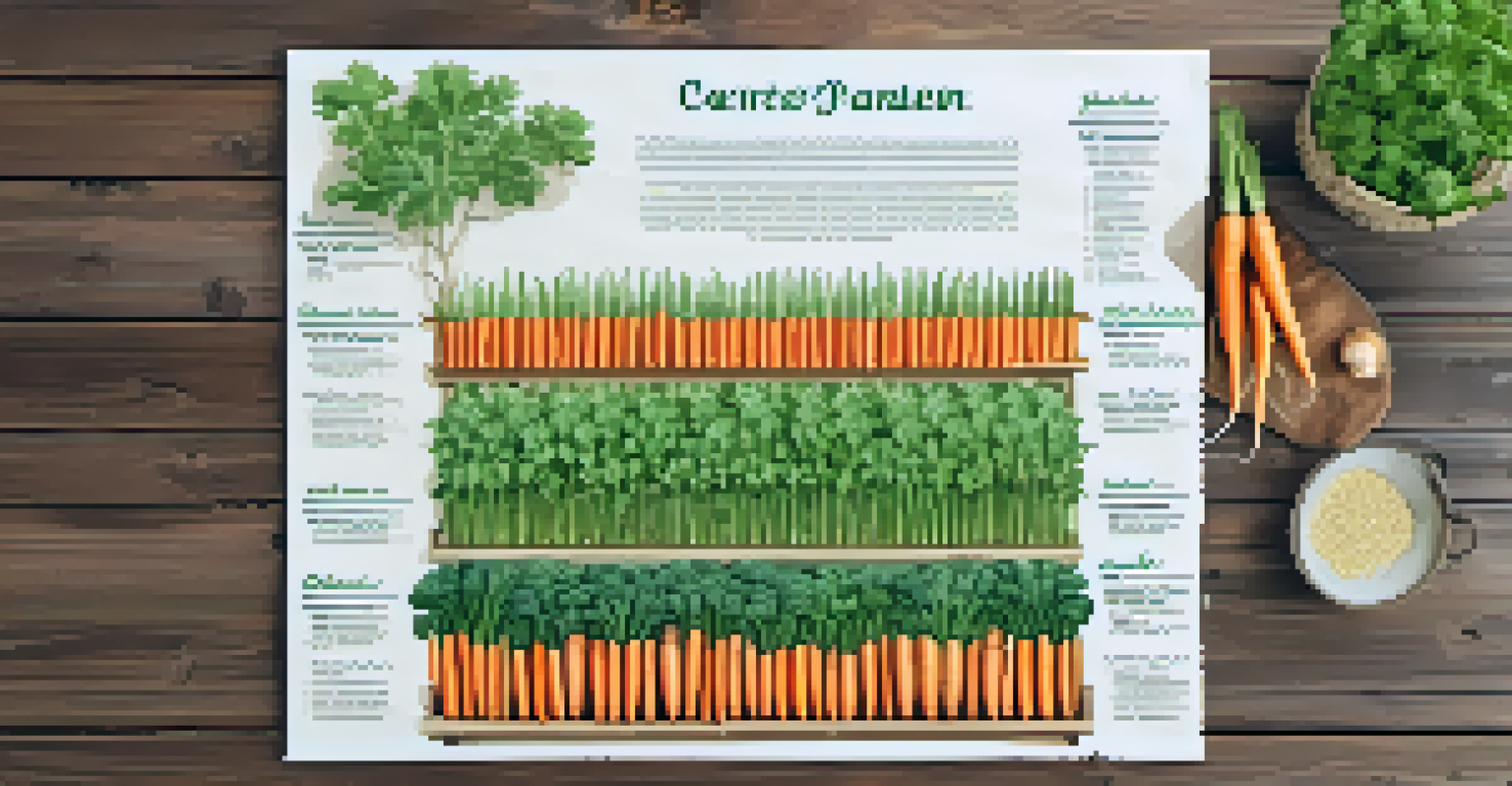Companion Planting: A Guide to Boosting Crop Yields

What is Companion Planting and Its Benefits?
Companion planting is a gardening strategy where different plants are grown together to enhance growth and deter pests. Think of it like creating a team of plants that support each other, sharing nutrients and providing protection. The benefits can include increased crop yields, healthier plants, and a more vibrant garden ecosystem.
Companion planting is the art of working with nature, using a mix of plants to support each other and create a balanced ecosystem.
For instance, planting basil alongside tomatoes can improve flavor while repelling pests that typically target tomatoes. This symbiotic relationship not only makes the garden more productive but also reduces the need for chemical pesticides, aligning with sustainable gardening practices.
Moreover, companion planting can optimize space in your garden by allowing you to grow more in less area. By understanding which plants thrive together, gardeners can maximize their harvests while fostering a diverse and resilient garden environment.
Choosing the Right Companion Plants
Selecting the right companions is crucial for successful planting. Not all plants benefit from being next to each other, so understanding their relationships is key. For example, carrots and onions work well together; the onions can repel carrot flies, providing a natural defense.

On the other hand, some plants can hinder each other's growth, like tomatoes and potatoes, which can share diseases. This highlights the importance of researching plant compatibility before planning your garden layout to ensure a harmonious environment.
Benefits of Companion Planting
Companion planting enhances growth, deters pests, and promotes a healthier garden ecosystem.
You can create a companion planting chart to keep track of which plants thrive together. This chart can serve as a handy reference, making it easier to plan your garden and boost your yields effectively.
The Role of Pest Control in Companion Planting
Pest control is one of the primary benefits of companion planting. Many plants can naturally deter pests, reducing the need for harmful pesticides. For instance, marigolds are known to repel nematodes and other garden pests, making them a perfect companion for various crops.
The greatest gift of the garden is the restoration of the five senses.
By strategically positioning plants that repel pests near vulnerable crops, you can create a natural barrier. This not only protects your plants but also encourages biodiversity, as beneficial insects are attracted to a diverse garden.
In addition, some plants can attract beneficial insects like ladybugs and lacewings, which prey on harmful pests. By fostering a balanced ecosystem, you can maintain a healthier garden with less intervention.
Enhancing Soil Health Through Companion Planting
Companion planting can significantly improve soil health, which is essential for robust crop yields. Certain plants, such as legumes, have the ability to fix nitrogen in the soil, enriching it for neighboring crops. This natural fertilization process can lead to healthier, more productive plants.
Moreover, deep-rooted plants can help break up compact soil, allowing for better water infiltration and nutrient access for shallower-rooted companions. For example, planting radishes alongside leafy greens can enhance soil structure while maximizing space.
Choosing Compatible Plants
Selecting the right companion plants is essential, as some combinations can boost growth while others may hinder it.
Regularly rotating companion plants can also prevent soil depletion, ensuring that nutrients are replenished over time. This practice promotes long-term sustainability in your gardening efforts.
Timing and Seasonality in Companion Planting
Timing is key when it comes to companion planting. Different plants have varying growing seasons, and understanding these can help you maximize yields. For instance, planting fast-growing radishes alongside slower-growing crops can ensure that you utilize the space effectively.
Additionally, staggered planting can allow for continuous harvesting throughout the season. By planning your planting schedule, you can ensure that your garden is productive from spring through fall.
Keep in mind that local climate and seasonal changes can also affect plant growth. Paying attention to your garden's specific conditions will help you make more informed decisions about when and what to plant together.
Common Companion Planting Combinations
Some companion planting combinations have stood the test of time, proving effective across many gardens. For example, the classic trio of tomatoes, basil, and peppers work well together, enhancing flavor and deterring pests.
Another popular combination is corn, beans, and squash, known as the Three Sisters. This method utilizes the corn for height, beans for nitrogen fixation, and squash to cover the ground, preventing weeds and retaining moisture.
Pest Control & Soil Health
Companion planting naturally reduces pests and improves soil health through nitrogen fixation and structured root systems.
Experimenting with different combinations can lead to delightful surprises, as you discover what works best in your unique garden. Don’t hesitate to try new pairings and observe the results!
Tips for Successful Companion Planting
To achieve success with companion planting, start by researching the plants that thrive together. A good practice is to maintain a garden journal, noting which combinations yield the best results and any challenges you encounter.
It's also important to consider the growth habits of each plant. Taller plants can provide shade for smaller companions, while sprawling plants can cover the ground. This thoughtful arrangement can lead to a more productive garden.

Lastly, don’t forget to maintain good garden hygiene. Regularly removing weeds and debris can prevent pests and diseases from taking hold, ensuring that your companion planting efforts pay off.